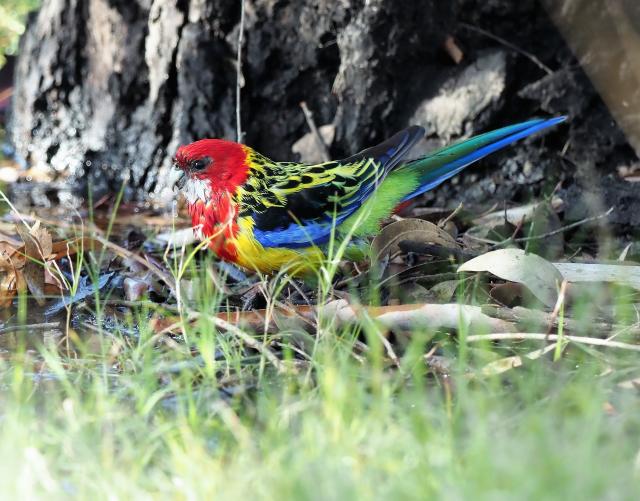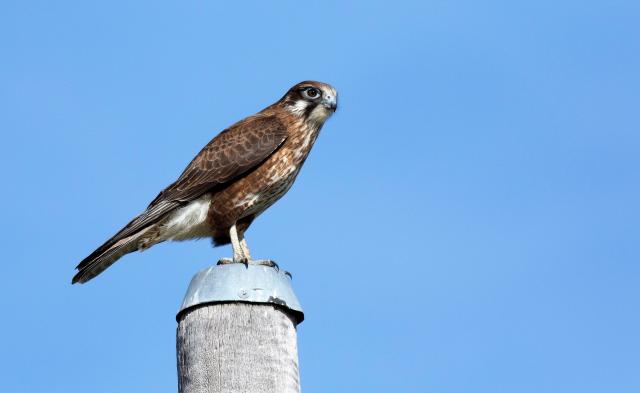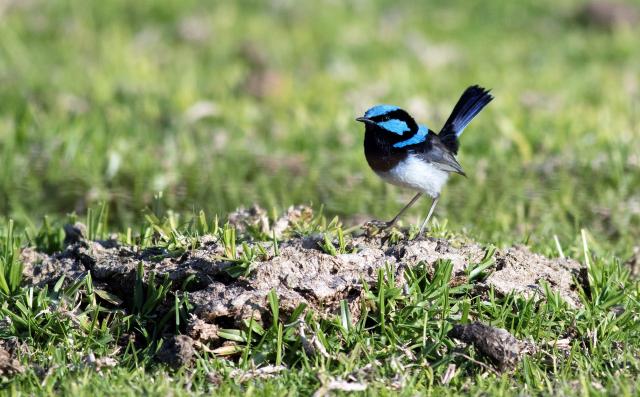Once again, I’ve been working way too much to plan some outings, so I’ve had to rely on some eagle-eyed readers to provide me with their wonderful bird observations.
I rode my bike down Creswell Road in Marcus Hill, to see if the resident brown falcons were present, or if I could spot any flame robins on the farm fences, and instead of the falcons I watched a flock of superb fairy-wrens hopping around the paddocks.
One male wren had particularly striking blue breeding plumage. Superb fairy-wrens moult into their breeding plumage each breeding season. Out of the breeding season most male birds moult into an eclipse plumage, which is similar to the brown female plumage but with a bluish tail. Some males maintain their blue colour all year round, but that is an exception rather than the rule.
The male in Creswell Road was exceptional indeed. It’s been observed that female superb fairy-wrens favour males with the brightest colours, and some males moult and convert to their bright blue plumage early in the winter.
I had a close encounter a few days later with a brown falcon in St Albans Park along the Barwon River.
I received an email from Alan, who called by the Basin Reserve near Drysdale on a sunny morning, but the birds were hiding from him and it was very quiet. He spotted two eastern rosellas returning to a tree hollow where he saw them previously.
Alan continued over to Lake Lorne and was lucky to find an eastern rosella taking a dip in the shade close to shore. It was not too worried about Alan being about 15m away and even went back into the water for a second dip.
Alan also ventured to O’Donohue’s Road on the outskirts of Anglesea, and saw several southern emu-wrens for the first time. Alan described these little birds as moving like “roadrunners” in that they were in focus one moment and gone the next.
Alan observed that the heath is just stunning at present with pink and white flowers amongst ground cover banksias and other natives, which meant that there were many honeyeaters around.
I received an email from Kevin, who observed six white-headed stilts feeding in a pond by the side of Clows Lane, Point Lonsdale, which was a welcome sight. There was an immature stilt in the flock. These birds are also known as black-winged stilts and pied stilts.
Kevin also observed a white-faced heron that was feeding at close quarters in some grass in Queenscliff.
Kevin also saw both eastern and crimson Rosellas at Ocean Grove Nature Reserve.
I received a very exciting email from Geoff, who noticed nine hooded plovers at Thirteenth Beach.
I also received an email from Carole, who went for a walk on a lovely winter’s day where the weather was fresh but there was no wind and thus the sea was very calm. As the tide was low Carole decided to walk to the very end of Edwards Point near St Leonards.
When Carole rounded the point she came across some lovely birds – of course gulls, black swans, pelicans, many, many white faced herons and a few red-necked stints and red-capped plovers that were all happily feeding.











